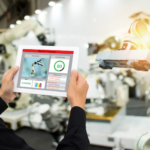In the fascinating universe of military aviation, the distinction between a fighter jet and a combat aircraft is essential to understand. Although these two types of aircraft share common characteristics, their design and role on the battlefield differ significantly. While a combat aircraft is primarily dedicated to intercepting and engaging other aircraft, a fighter jet presents itself as a more versatile model, capable of executing various missions ranging from ground attack to anti-ship operations and even anti-submarine warfare. This fundamental nuance underscores the evolution of military technologies and aerodynamic strategies in an ever-changing combat environment.
In the aerospace field, the terms fighter jet and combat aircraft are often used interchangeably, but there are significant differences between the two. Understanding these distinctions involves exploring the capabilities, missions, and designs of these aircraft. A combat aircraft is primarily designed for air interception, tasked with neutralizing enemy air threats. In contrast, a fighter jet is a broader term that encompasses various types of military aircraft, capable of performing a multitude of missions, including ground attacks and reconnaissance missions.
Fighter aircraft are distinguished by their design focused on air superiority. They are optimized for exceptional performance in air combat, featuring advanced weapon and detection systems that allow them to effectively engage enemy targets. In contrast, a multirole fighter jet is capable of operating effectively in a variety of scenarios, combining the interception of adversary aircraft with ground attack missions. This means that a fighter jet can carry more diverse payloads while maintaining air combat capabilities.
Another fundamental aspect lies in the payload. Fighter jets, especially multirole ones, are designed to carry a variety of armaments, such as guided bombs, air-to-ground missiles, or anti-ship missiles. This grants them versatility that is particularly valued in contemporary conflicts, where the need to adapt to different threats on the battlefield is crucial. In contrast, traditional fighter aircraft typically carry specific armaments, such as air-to-air missiles and cannons, for neutralizing other aircraft.
Technology and onboard equipment are also major distinguishing factors. Modern fighter jets integrate electronic warfare systems, stealth capabilities, and advanced detection technologies, allowing them to operate in complex combat environments. These features give them a significant tactical advantage during joint operations. In contrast, although some fighter aircraft are also equipped with advanced technologies, their primary objective remains the struggle for air superiority, often at the expense of overall versatility.
It is also important to note that the piloting of fighter jets differs from that of fighter aircraft. Fighter jet pilots often have to be trained to operate in multiple different scenarios and under various mission constraints. This requires a deep understanding of modern air combat tactics, as well as best practices for executing complex maneuvers. For fighter aircraft pilots, training focuses more on dogfighting and direct air engagements.
The distinction between a fighter jet and a combat aircraft is also manifested in military strategy. Armed forces often think in terms of mission needs and objectives, thereby defining the types of aircraft required for certain operations. While a combat aircraft might fulfill an air defense role, a fighter jet would generally be employed for a strike mission, enhancing the overall effectiveness of armed forces on the ground.
Ultimately, the differences between these two types of aircraft reflect the evolution of military operational needs and the emergence of new technologies. Adaptability and efficiency are essential for modern missions, placing fighter jets at the heart of contemporary defense strategies.

FAQ: Differences Between a Fighter Jet and a Combat Aircraft
What is a fighter jet? A fighter jet is a generic term that refers to military aircraft capable of conducting various missions, ranging from anti-air warfare to ground attack and maritime defense.
What is the primary mission of a combat aircraft? A combat aircraft is specifically designed to intercept and destroy enemy aircraft, notably bombers, by taking charge of air superiority.
How does a fighter jet differ from a combat aircraft in terms of versatility? A fighter jet can perform multiple types of missions, for example, air-to-ground operations, while a combat aircraft primarily focuses on air combat missions.
What are the main types of munitions used by a fighter jet? A fighter jet carries various munitions, ranging from guided bombs to air-to-ground missiles, giving it ground attack capability.
Do fighter jet pilots face similar G-forces as fighter aircraft pilots? Yes, fighter jet pilots can also experience high G-forces, but the maneuverability characteristics and mission type influence their experience.
What examples illustrate the difference between a fighter jet and a combat aircraft? Typical examples of fighter jets include aircraft like the F-15E Strike Eagle, which can conduct bombing missions, while combat aircraft like the F-22 Raptor are primarily oriented towards interception.
What importance does technology hold in differentiating fighter jets and combat aircraft? Advanced technology on fighter jets allows them to perform more complex and varied missions, thereby increasing their efficiency and operational range.

























